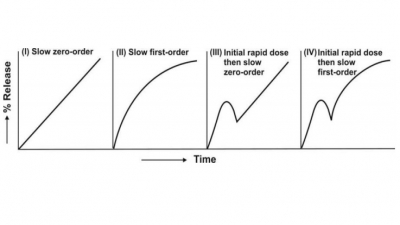Ophthalmic Drug Delivery Systems
| Home | | Biopharmaceutics and Pharmacokinetics |Chapter: Biopharmaceutics and Pharmacokinetics : Controlled Release Medication
Absorption of ophthalmic drugs across the corneal membrane is a diffusion process and depends to a large extent on: 1. Physicochemical properties of the permeating molecule, and 2. Drainage and output of tears.
OPHTHALMIC DRUG DELIVERY SYSTEMS
Absorption of ophthalmic drugs across the corneal
membrane is a diffusion process and depends to a large extent on:
1. Physicochemical properties of
the permeating molecule, and
2. Drainage and output of tears.
Most drugs for ophthalmic use like pilocarpine,
epinephrine, local anesthetics, atropine, etc. are weak bases which are
generally formulated at acidic pH to enhance stability. But due to their highly
ionized form, ocular diffusion is poor. This, coupled with tear drainage,
further reduces the rate and extent of absorption. Moreover, if the drug has
short half-life, the problems become more complicated. Frequent dosing of large
doses of such drugs becomes necessary to achieve the therapeutic objective
which often results in corresponding increase in local (e.g. irritation) and
systemic side effects. One of the approaches to improve drug effectiveness is
to prolong its contact with corneal surface. Highly viscous preparations like
suspensions and ointments are intended to achieve this purpose but do not offer
the amount of control desired. Continuous delivery of drugs in a controlled
manner can overcome most of these problems. A number of ocular drug delivery
systems have been developed for providing zero-order input. The best known
system is ocular insert or ocusert developed to deliver pilocarpine
in the treatment of glaucoma. Available in two release forms—20 and 40
mcg/hour, the system provides relief for 7 days (following insertion in the cul-de-sac, just below the cornea) in
contrast to eyedrops which are required to be instilled 3 to 4 times daily. The
system is basically a thin, flexible wafer, composed of a drug reservoir core
surrounded on either side by rate-controlling membranes of ethylene-vinyl
acetate copolymer (Fig. 14.20).
Fig. 14.20 Schematic representation of
ocusert
Related Topics

